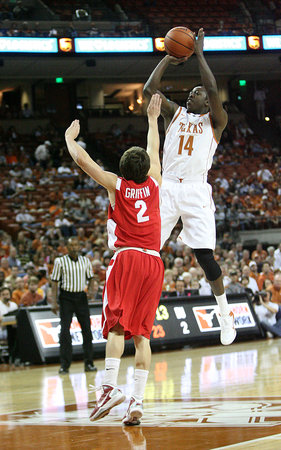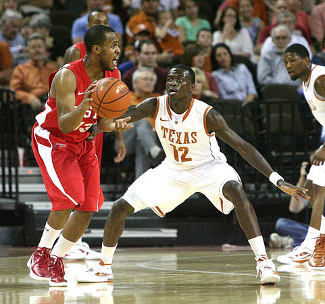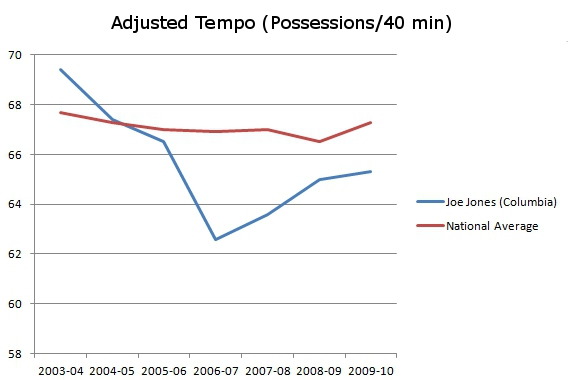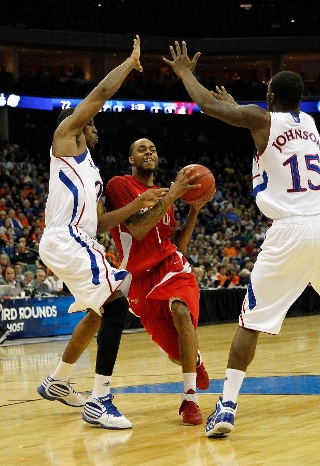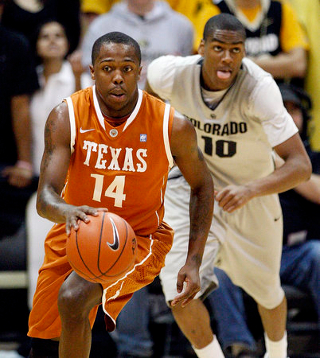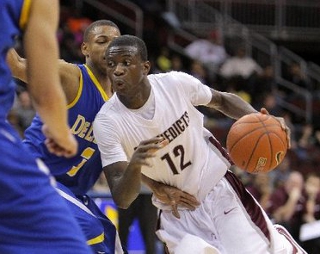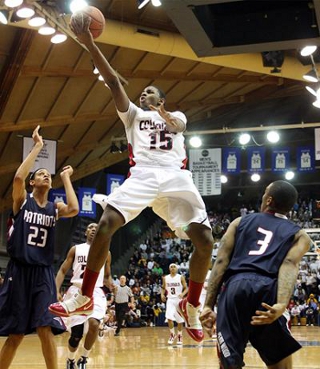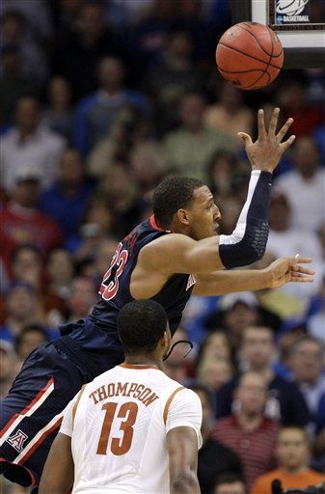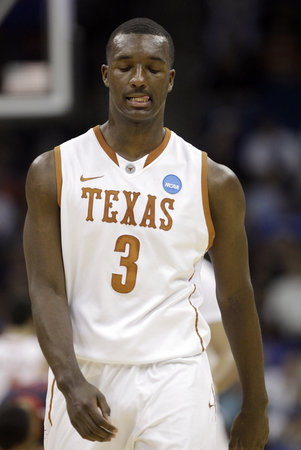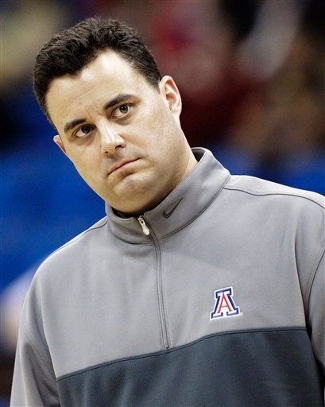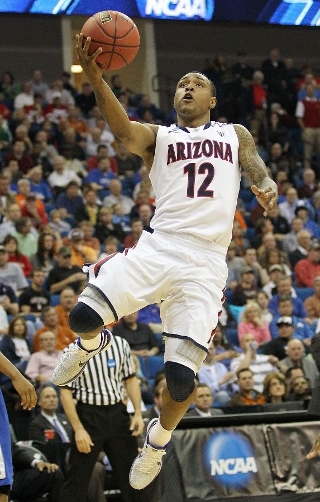It was only one game, but the future certainly looks bright for the Texas Longhorns. Led by junior J’Covan Brown, Rick Barnes’ freshman-laden roster settled down after some early adversity and cruised to an easy, 36-point win in front of a home crowd on Sunday night. Brown tied a career-high with 28 points and added eight assists, despite enjoying the final five minutes of the blowout from the bench.
J’Covan Brown dropped 28 points on Boston What looked good Brown’s scoring outburst gives Texas fans a lot to be optimistic about, as there is no doubt that he will have to be the team’s leader this season. He scored in a variety of ways, knocking down three triples, earning his way to the line for five points, and repeatedly sinking a soft pull-up floater. Texas also found success multiple times on backdoor cuts for the junior, giving him easy finishes at the rim. Perhaps most importantly, Brown finished the night with eight assists. One of the most consistent complaints about his game last season was his troubling habit of dominating the ball to the detriment of the team. Against Boston, he was willing to give up the rock when his teammates were in a position to score. Although Brown took a few bad shots early in the game, most of them came on possessions where the entire team was standing idly in the half-court set. In addition to Brown’s career night, the team’s defense was another reason for excitement for Longhorn fans. Texas made the Terriers uncomfortable all night, forcing turnovers on a whopping 34.2% of Boston’s possessions. The Longhorns utilized ball pressure well past the perimeter, often making it difficult for the Terriers to even get into their offense. The active hands of freshmen Sheldon McClellan and Jonathan Holmes earned them each a pair of steals. Both used their lengthy wingspans to simply reach around the ballhandler or disrupt passing lanes on multiple ocassions. In the post, Alexis Wangmene gave a solid defensive effort to kick off his senior campaign. He did an excellent job standing tall and forcing players to take bad shots, and even blocked five in just 26 minutes on the court. A few of those swats came when he was the help defender, bringing to mind the excellent team defense of last season’s squad. The only knock on Wangmene’s defensive performance was that on a few instances, it was a little too easy for his man to back him down to the blocks. Fortunately, even on those plays, he typically stiffened up the D at that point and made the Terriers earn their points. The senior also impressed with his off-the-ball play on offense. He had a few good seals as his teammates were driving to the hoop, giving them easy access to the rim, and he set some stout high screens to free up the guards. While Texas will likely need a little more than his four point output on some nights, fans have to be very happy with his seven-rebound, five-block performance. Senior Clint Chapman is the other half of the big-man puzzle for Texas, and while he didn’t land on any All-American lists last night, he showed that he might be a serviceable option this season. Chapman utilized some nice face-up skills late in the game, lumbering baseline for an easy dunk and taking another defender to the hole for a layup.
Myck Kabongo and the Horns played lockdown D Freshman phenom Myck Kabongo lived up to his billing as point-guard extraordinaire, logging seven assists in just 22 minutes. While he didn’t have any highlight-reel assists, he did showcase excellent court vision on some really nice interior feeds in the second half. Kabongo also added a three pointer and a pair of steals to his stat line. Guard Julien Lewis was one of three freshmen in the starting lineup, and he unveiled a great catch-and-shoot ability behind the arc. His Longhorn teammates constantly found him open from long range, where he knocked down 4-of-7. Seeing the team repeatedly find Lewis in the flow of the offense was a very welcome sight for Texas fans who have watched some recent teams force things from long range. Lewis also added some easy layups to score 18 in his debut. Fellow freshman Sterling Gibbs didn’t do anything exceptionally flashy in his 20 minutes off the bench, but he knocked down his one open look from behind the arc and notched three assists. One of the most exciting developments of the night was at the free throw line. After a season in which the Horns shot just 65.4% at the line, the team’s 75% mark in last night’s game seemed downright unbelievable. Although Brown missed his first attempt — breaking the streak of 28-consecutive makes he began in last season’s Big 12 title game — he knocked down his other five. Kabongo and McClellan were the only other Horns to make it to the line, so only time will tell if Holmes, Bond, or Lewis are comfortable at the stripe. What needed work The number one concern for this team heading into this season was its weakness in the frontcourt, and that problem manifested itself in a poor rebounding effort against the Terriers. Although Boston was a smaller team and had just been worked on the glass by Northeastern on Friday night, the Terriers claimed a 43-35 edge on the boards. Some of the rebounding problems were a result of Wangmene and Chapman still struggling to control the ball when it came to them. There was also a surprising number of long rebounds that would fall loose around the free throw line or perimeter, with nothing but red jerseys around to claim it. The Longhorns allowed Boston to reclaim 43% of their missed shots, a number that is going to be absolutely deadly when replicated against a team that makes those second chances count. There were also stretches of play where the Texas offense seemed to lack any direction or flow. For much of the first half, the Longhorn offense turned stagnant, as players stood around or half-heartedly made weak cuts along the baseline. Oftentimes, those possessions ended with Brown trying to take control and being forced into bad looks. At halftime, the team seemed to make adjustments, coming out of the locker room with lots of motion in the half-court set and excellent interior passing to the bigs or guards cutting along the baseline. But as the Texas lead expanded, the Horns once again became complacent, jacking up an inordinate amount of threes down the stretch. Hopefully this lack of focus was simply a result of the lopsided score, and not an indication that the youngsters might camp out on the perimeter this season rather than run an offense. As always, it’s important not to put too much stock into the results of one game, and it’s especially important not to do so after a season opener. But for Texas fans who had a multitude of concerns about this year’s team, it’s a relief to see the team play as well as they did last night. While the frontcourt will have its share of issues against deeper, more-experienced units this season, the play of Wangmene and Chapman gives fans hope that they can hold down the fort and let the backcourt carry the team. And although the youthful Longhorns will certainly have growing pains as they face tougher teams down the road, all of the freshmen looked confident in Sunday night’s debut. Next up: vs. Rhode Island (0-1); Tuesday, 3 P.M. CT |








